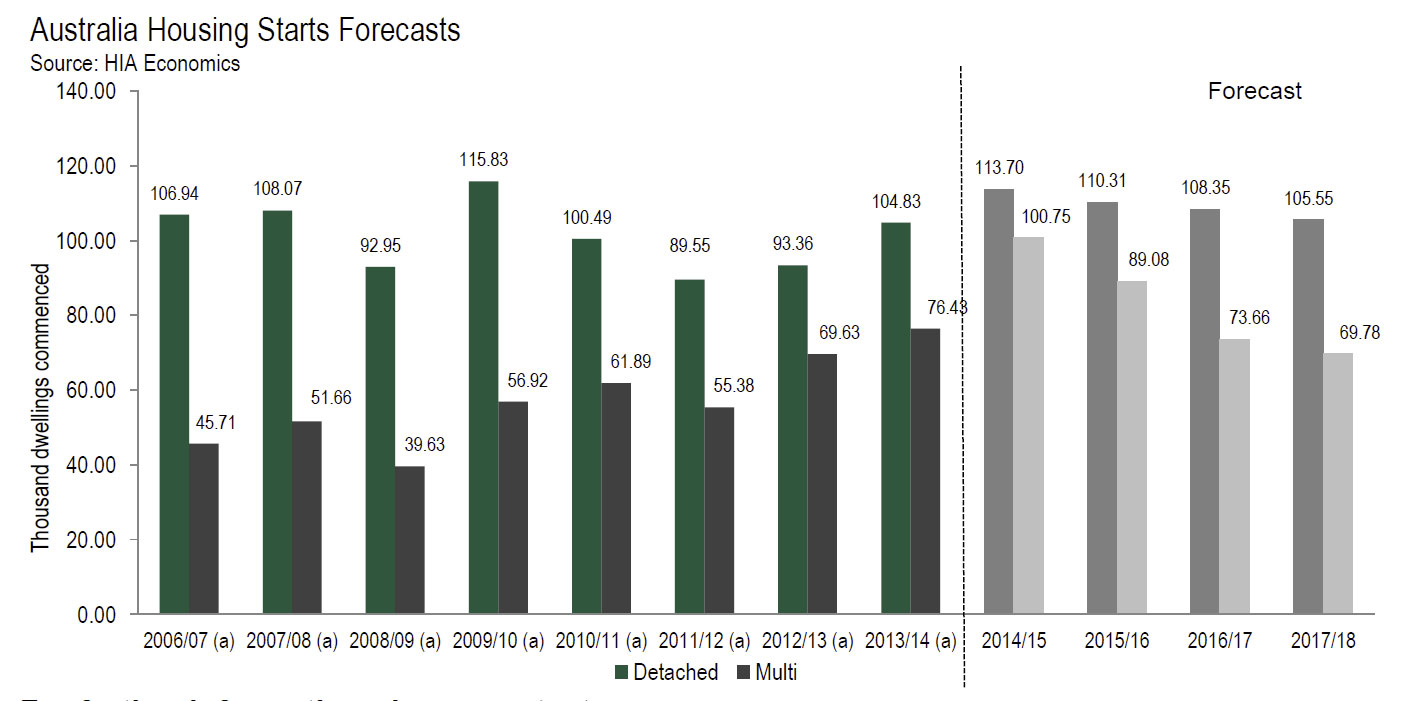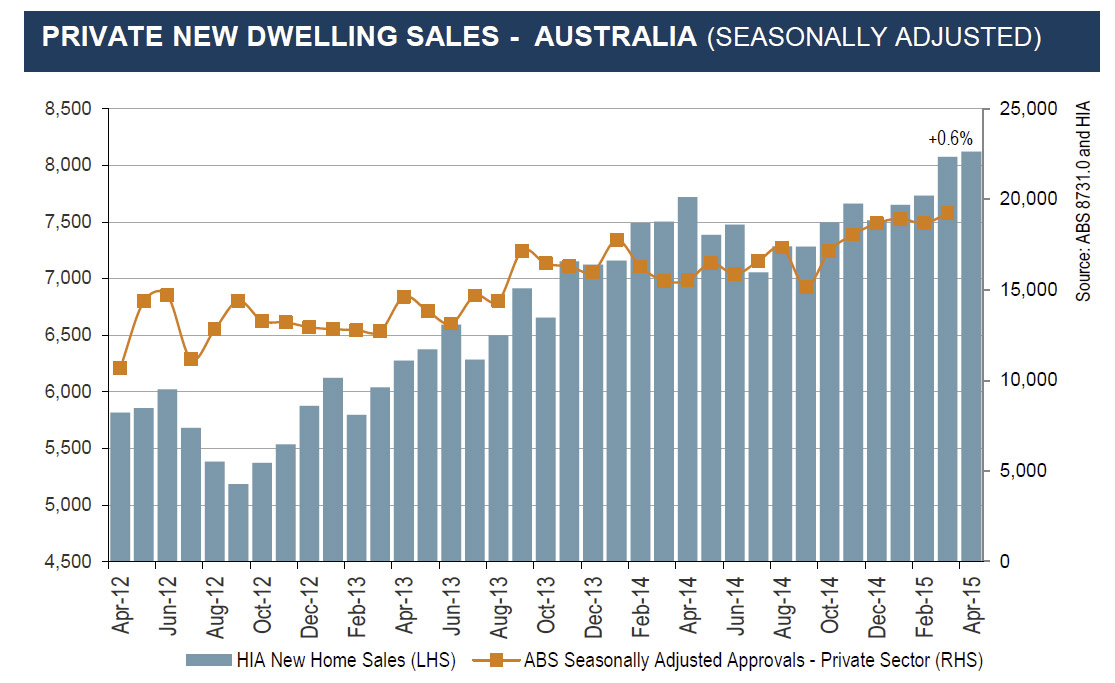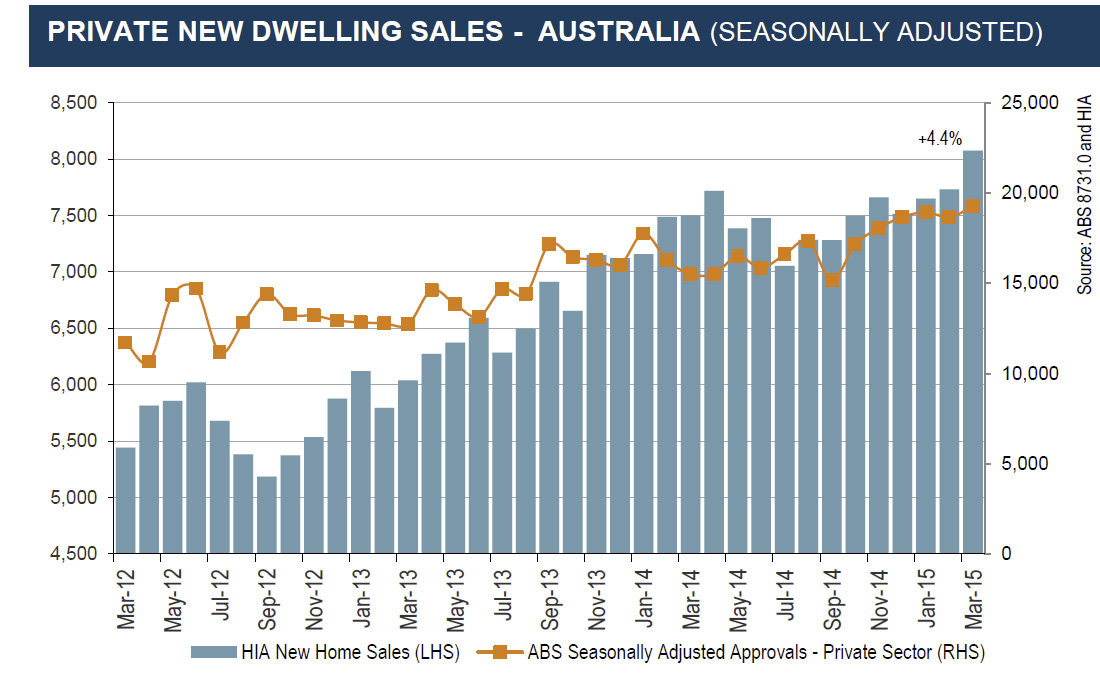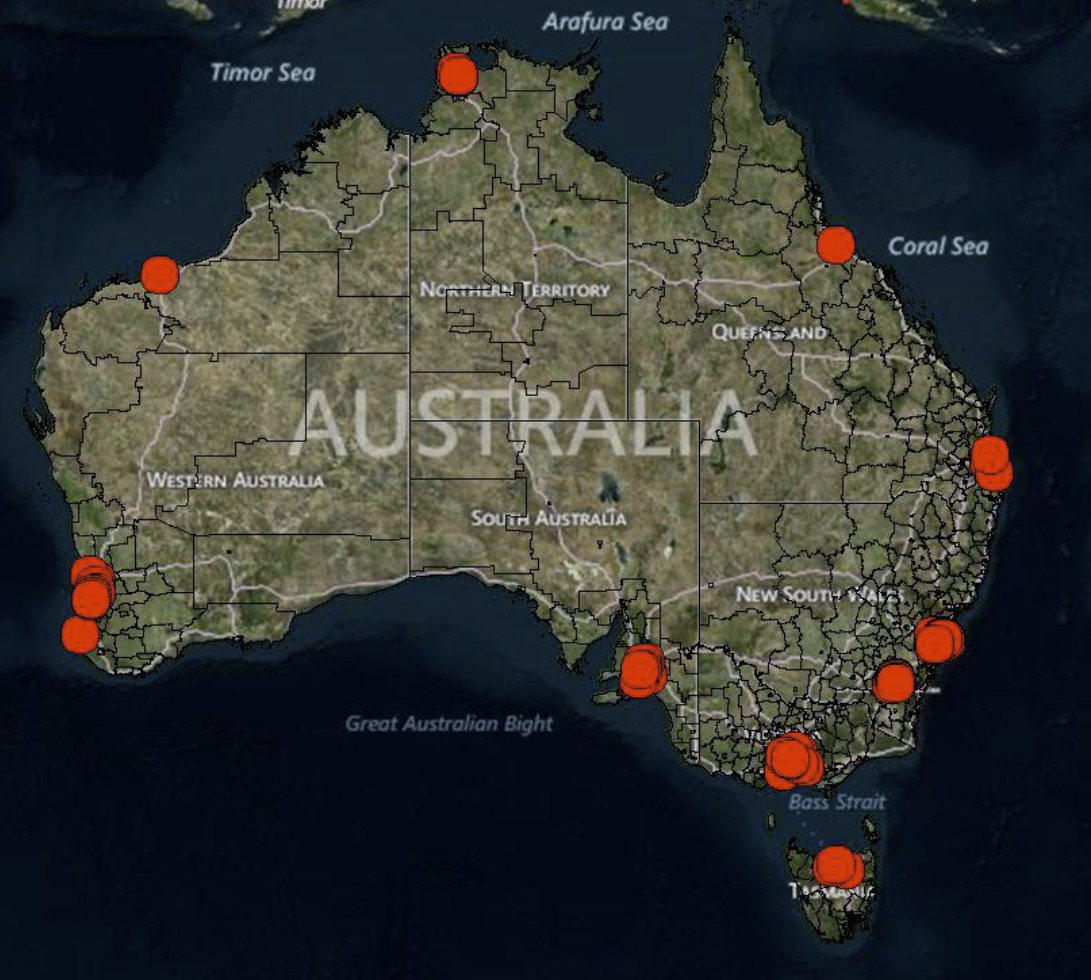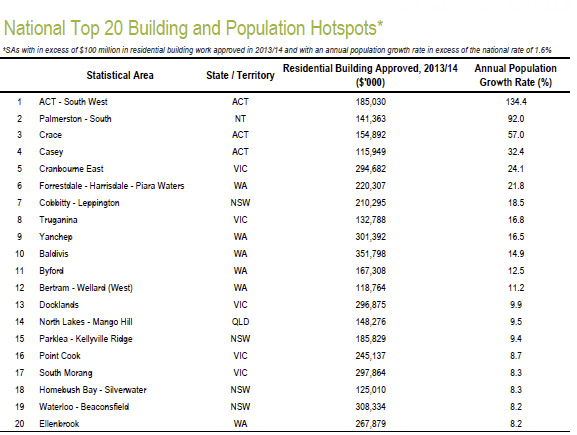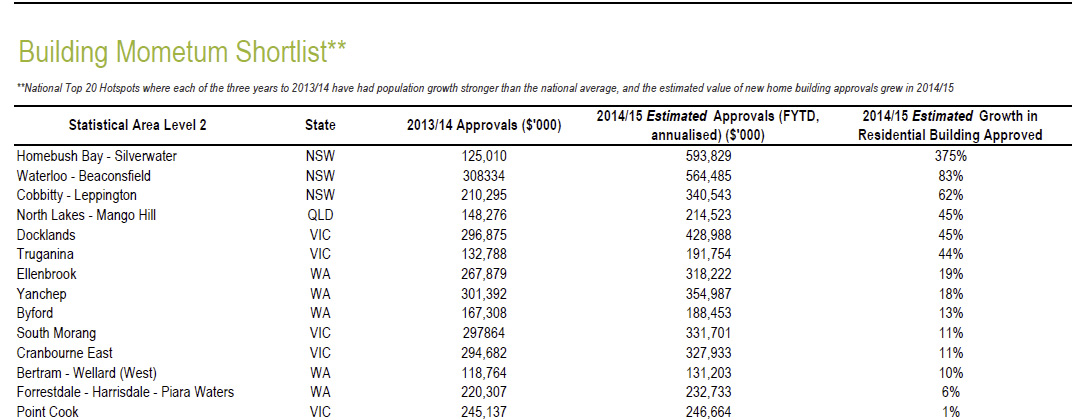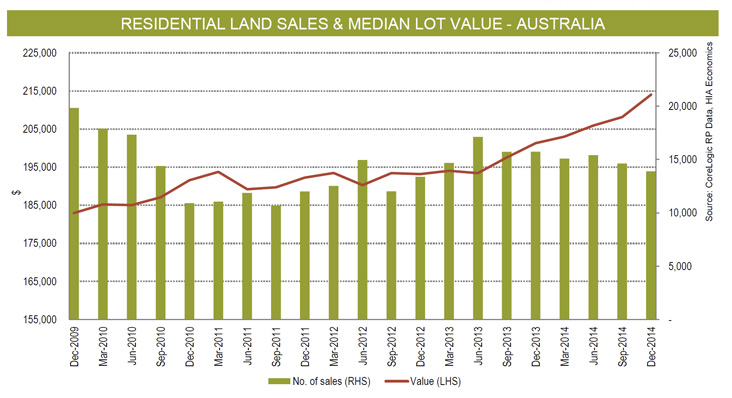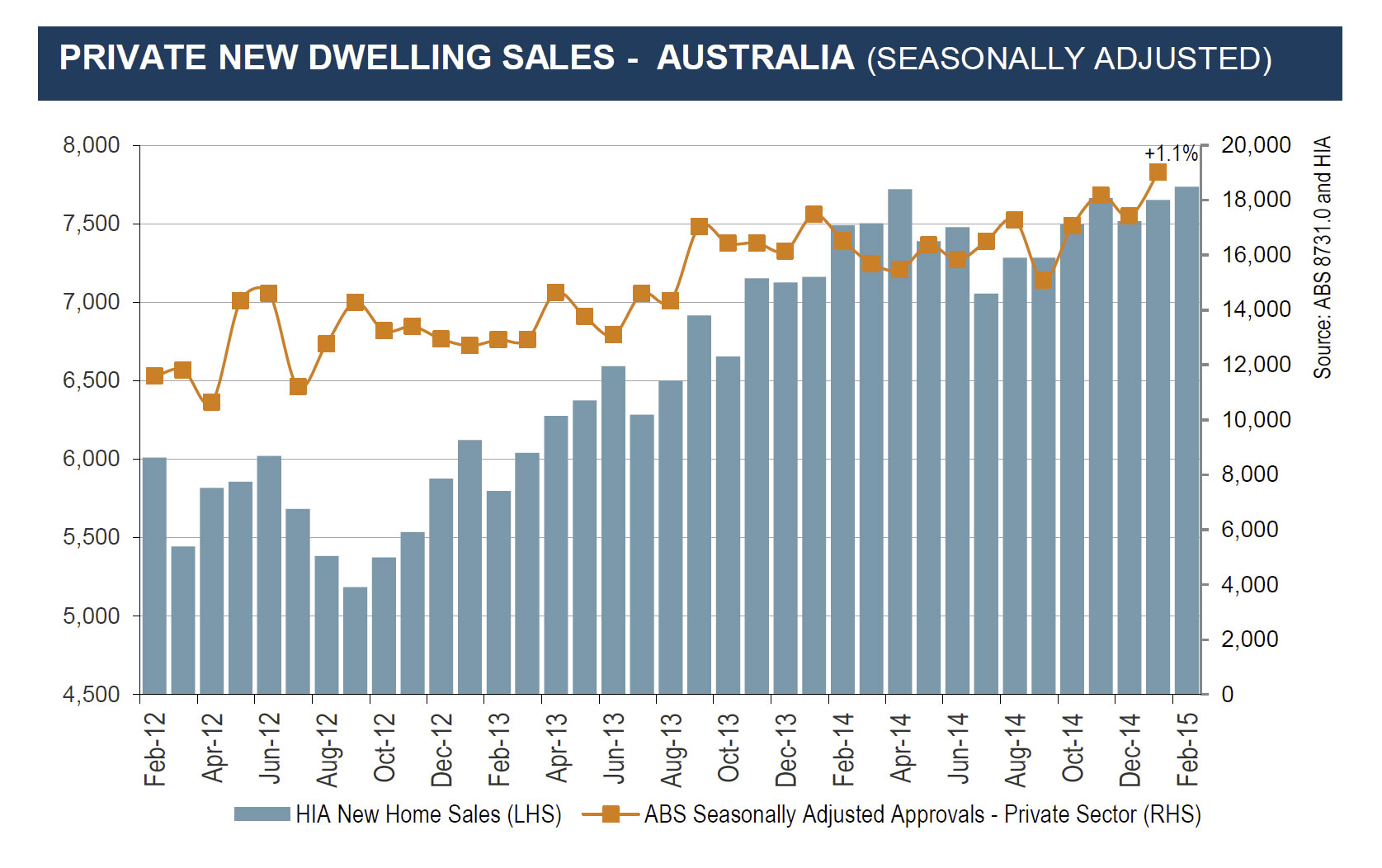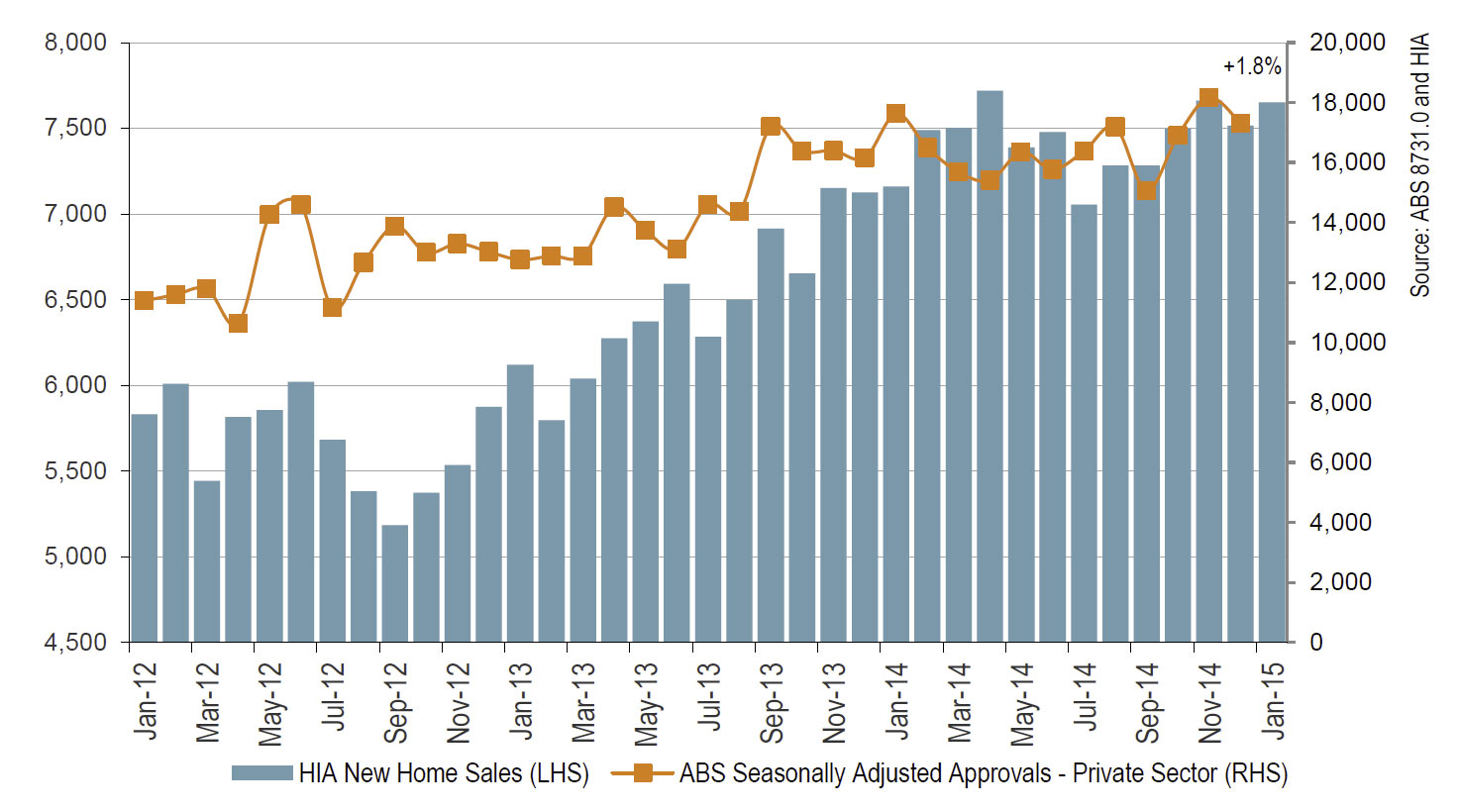New home commencements have peaked, but will remain at a very high level in 2015/16 according to new analysis from the Housing Industry Association (HIA). “It is likely that new dwelling commencements peaked at a record level of 215,000 in the financial year just passed, and indeed the risk is for this apex to be even higher,” said HIA Chief Economist, Dr Harley Dale. “This is an extraordinarily high level which is 15 per cent above the previous cyclical record of 187,000 dwelling commencements achieved in 1994.”
HIA expects a cyclical peak of nearly 214,500 new dwelling commencements for the 2014/15 financial year, although there is the risk that the 2015 calendar year delivers an even higher record. It is expected that both detached house and ‘multi-unit’ commencements have reached cyclical highs, but a further surge in unit construction could yet deliver a 2015 calendar year peak. Detached house commencements are expected to have reached a level of 113,700 in 2014/15, 9 per cent above the long term average. Multi-unit construction has shot the lights out, hitting a level 117 per cent above the long term average with the number of commencements expected to reach 100,747.
“The approaching down cycle is likely to be considerably smaller for detached house commencements than for multi-units. Governments’ policy failure means that there is unrealised demand for new detached housing due to a range of supply side constraints led by a lack of shovel ready land,” concluded Harley Dale.

